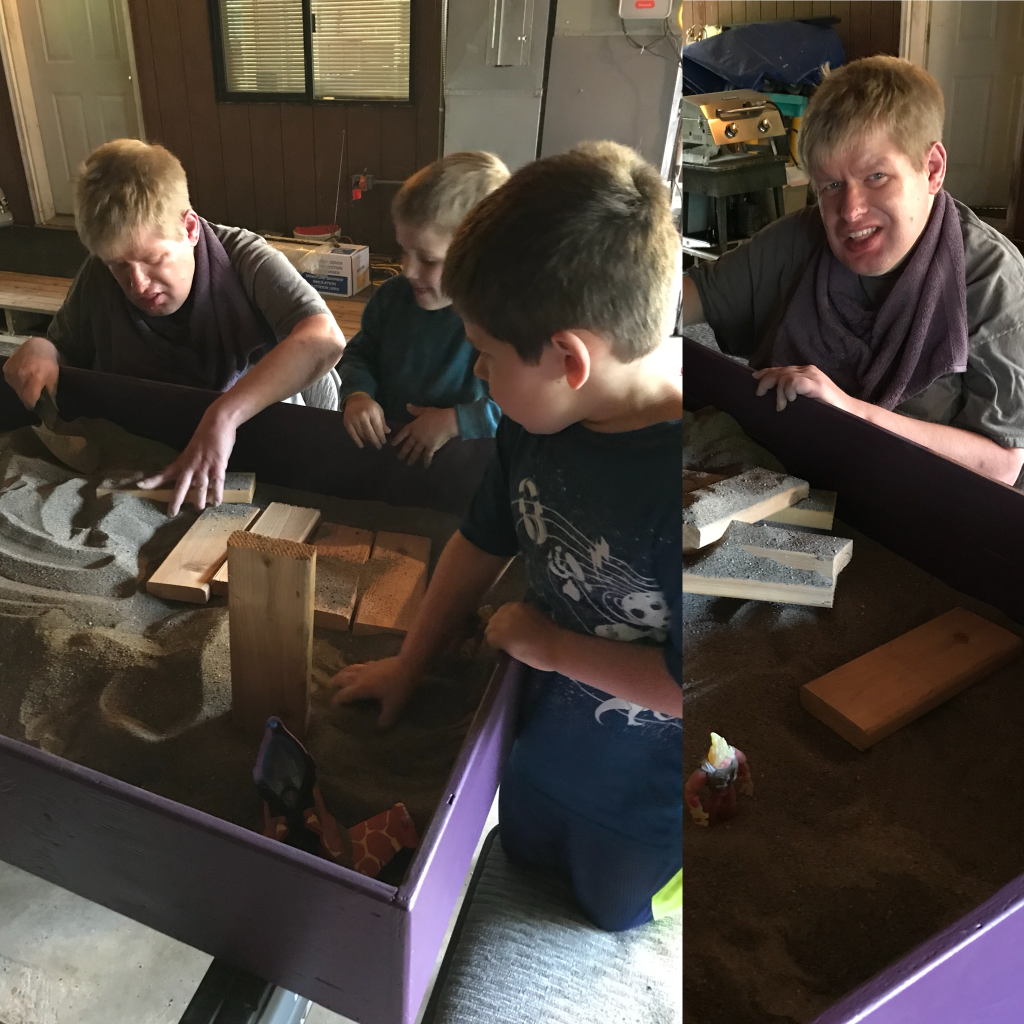When Nick was young, his physical therapist recommended that we build him a sandbox. She said that the tactile experience would be good for him. I liked the idea of him being able to do something that other kids did. The sandbox became a place where he played side by side with other children in parallel play.
When we moved to a new house, Nick kept asking us to build him a sandbox. He was 13 years old and it would have to be a big sandbox. After a few months, his uncle showed up one afternoon after work and built Nick a big sandbox. There was room for Nick and several of his cousins. This new sandbox was also a place where Nick played with other kids. Most of the kids were 8 to 10 years younger than him, but they taught him cooperative play.
Years passed and then someone told me that they thought Nick was too old to play in a sandbox. After that very critical comment I decided not to take him outside to play in his sandbox anymore. I rationalized my decision by telling myself it was getting harder and harder for me to help him stand back up after he was done. There weren’t any little kids around to play with. Besides, he didn’t even ask about it. Weeds grew in the sandbox and eventually we took it apart when we built a storage shed in that part of the yard.
Earlier this year I took Nick to his day program that he calls school. One of the activities that day was playing with sand. Nick’s smile reminded me how much he loved it. I told Arden how Nick felt. We began making plans to create a place for Nick’s new sandbox. It needed to be big and sturdy. It needed to be table high so his wheelchair would fit underneath. We painted it purple, his favorite color. This weekend we filled it with play sand. It was finally finished.
Nick loves it. He has played in the sand with his nephews and by himself. He wanted to go play in his sandbox instead of having ice cream (What?!). He has built up his sand mountains and toppled them down. He is so happy.
Some things take a long time to figure out; other things we leave by the wayside only to pick them up again as we rediscover their importance. Imagine what your world would be like if you found the thing that makes you as happy as Nick is with his sandbox. (A therapist friend of mine reminded me that sandplay therapy is a recognized expressive therapy tool.)
Through this process of building a new sandbox for Nick, I realized that although sometimes others may not agree with what we choose to do with him, Arden and I are the ones with this responsibility. Over the years, we have been told by some that we are not making the right decisions, or that the time and effort we have expended on certain projects is not worth it. To the naysayers I say, just look at his smile. For me, that makes it all worth it.
If you want to get a copy of the book about my journey with Nick as soon as it is available, click here to sign up. Please share this blog with others. Don’t rely on your FaceBook feed to see all of my posts, sign up to get my blog delivered to your inbox directly.



2 Comments
I will never understand why anyone would try to tell a family what is good for another person’s child. Good parenting is a matter of very personal choices!
I agree with you. I do know that sometimes other people feel that they are helping. I wish that we all could bridle our tongues first and using an internal check-in try and imagine what our response would be if someone said that to us. We might all be kinder.
Comments are closed.